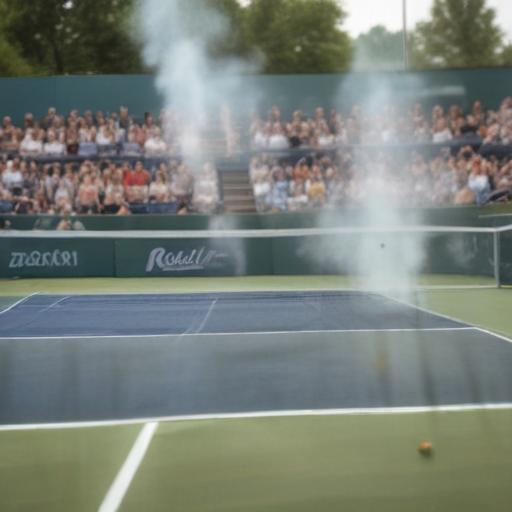US Open hash court: cannabis aroma drifts through Flushing Meadows as city life meets grand slam spectacle
The US Open has long been tennis’s loud, unruly grand slam, where the noise of trains, crowds and celebrity sightings blends with the rhythm of hard-hitting rallies. This year, a new constant has joined the soundtrack: the scent of cannabis that wafts across the Billie Jean King National Tennis Center and has become a talking point for players and spectators alike.
Casper Ruud, the 2022 US Open runner-up, spoke up during the mixed doubles event with Iga Świątek, calling the cannabis smell “the worst thing about New York.” He said the odor interrupts play and, while acknowledging it’s legal in the city, lamented inhaling the scent while trying to stay focused on the court. “It’s annoying to be on the court while someone smokes a joint,” Ruud said, noting there’s little players can do unless the law changes.
Danish media have even given the scene a nickname: Court 17 has been dubbed hash-banen, a cheeky shorthand that captures how the aroma has become part of the court’s identity alongside the raucous atmosphere and intimate setting.
The USTA has maintained a strict no-smoking policy inside the tennis center since at least 2011, but the cannabis legalization that New York embraced in 2021 has made Flushing Meadows feel like a microcosm of the state’s evolving culture. Outside the gates, the law is different: adults may possess up to 85 grams of cannabis and light up where tobacco use is allowed, and on Sunday fans could be seen lighting prerolls within sight of police near the South Gate.
City leadership has nudged toward a permissive stance. Mayor Eric Adams, a former NYPD captain, encouraged residents to enjoy themselves and spend money, while acknowledging the broader cultural shift toward cannabis in the five boroughs. The result is a patchwork reality: a high-profile sports event inside a regulated venue, surrounded by a city where cannabis culture is increasingly visible and legally complicated.
The smell at the Open isn’t new. It predates legalization, with Martina Hingis remarking on it in 2014, and players like Nick Kyrgios, Maria Sakkari, and Alexander Zverev later voicing frustration. Kyrgios, who has asthma, once complained that the odor was especially objectionable between points. Zverev has likened the mood around Court 17 to “Snoop Dogg’s living room.” A tongue-in-cheek preview this week even joked that Holger Rune had been sent to hash-banen for his second-round match, a reflection of how closely the narrative has followed the tournament.
Tournament officials say they cannot police what happens outside the grounds but remain vigilant inside. A USTA spokesperson told the Guardian that the center is, and will remain, smoke-free on property, with enforcement by security and guest services when notified of any violations. No evidence was found of fans lighting up inside Court 17 after reviews of video footage, the spokesperson added; officials suggested the smell likely drifted from Corona Park.
The near-constant aroma has underscored a broader cultural tension: the Open has always prided itself on being the sport’s loudest, least buttoned-up major, a contrast to Wimbledon and Roland Garros, where strict atmosphere rules apply. For some players, the sensory overload is part of the thrill of New York; for others, it’s a distraction to overcome. In practice, the Open keeps rolling.
What this means going forward is a push-pull between city policy, event security, and player comfort. The USTA’s enforcement focus remains inside the gates, while the surrounding park area continues to reflect New York’s evolving cannabis landscape. Fans and players alike will likely adapt, choosing to tune into points and performances while navigating the unique aroma of a tournament that is as much a neighborhood spectacle as it is a global sporting stage.
Summary of key points
– Cannabis odor has become a notable, recurring feature at the US Open, particularly around Court 17.
– Casper Ruud and other players have publicly commented on the distraction.
– Court 17 has earned the nickname hash-banen in Danish media, highlighting the cultural footprint of the aroma.
– The USTA enforces no smoking inside the venue, but New York’s legalization means outside the grounds the odor is common near Corona Park.
– The Open remains true to its identity as tennis’s most electric, unbuttoned major, even as it navigates evolving city norms.
Additional value and context
– The situation illustrates the clash between a major international sport’s strict on-site rules and a citywide policy environment that has liberalized cannabis use.
– For players with respiratory conditions or those who rely on intense focus, the external noise and scent can be a meaningful factor in performance; teams may increasingly plan for these sensory variables in travel and match-day routines.
– The ongoing dialogue between organizers, law, and culture mirrors broader conversations about how large events can balance local norms with the expectations of global audiences.
Positive note
The US Open’s willingness to acknowledge and discuss the issue reflects its broader role as a dynamic, real-time showcase of New York City life—where the sport, the city, and its evolving laws intersect. The tournament continues to deliver high-stakes tennis and a festival-like atmosphere, underscoring why it remains a definitive chapter in the grand slam calendar.
